Affiliate links on Android Authority may earn us a commission. Learn more.
Moto X Style / Pure Edition vs Nexus 6

Motorola fans with a desire for as big a screen as possible were given a great option in the Nexus 6 last year. While the phone wasn’t part of the Moto X family, the device featured a lot of Motorola’s typical design flair and, considering how stock Moto’s software generally is, even the software experience was relatively similar. This year, Motorola has released yet another big screen device, this time branding it as the Moto X Pure Edition in the states, and as the Moto X Style elsewhere.
From screen size to even the general aesthetic, the Nexus 6 and Moto X Pure have a number of things in common, though there are certainly plenty of differences a well. So how do these two big smartphones compare? That is what we find out, in this comprehensive look at the Moto X Style / Pure Edition vs Nexus 6!
Design
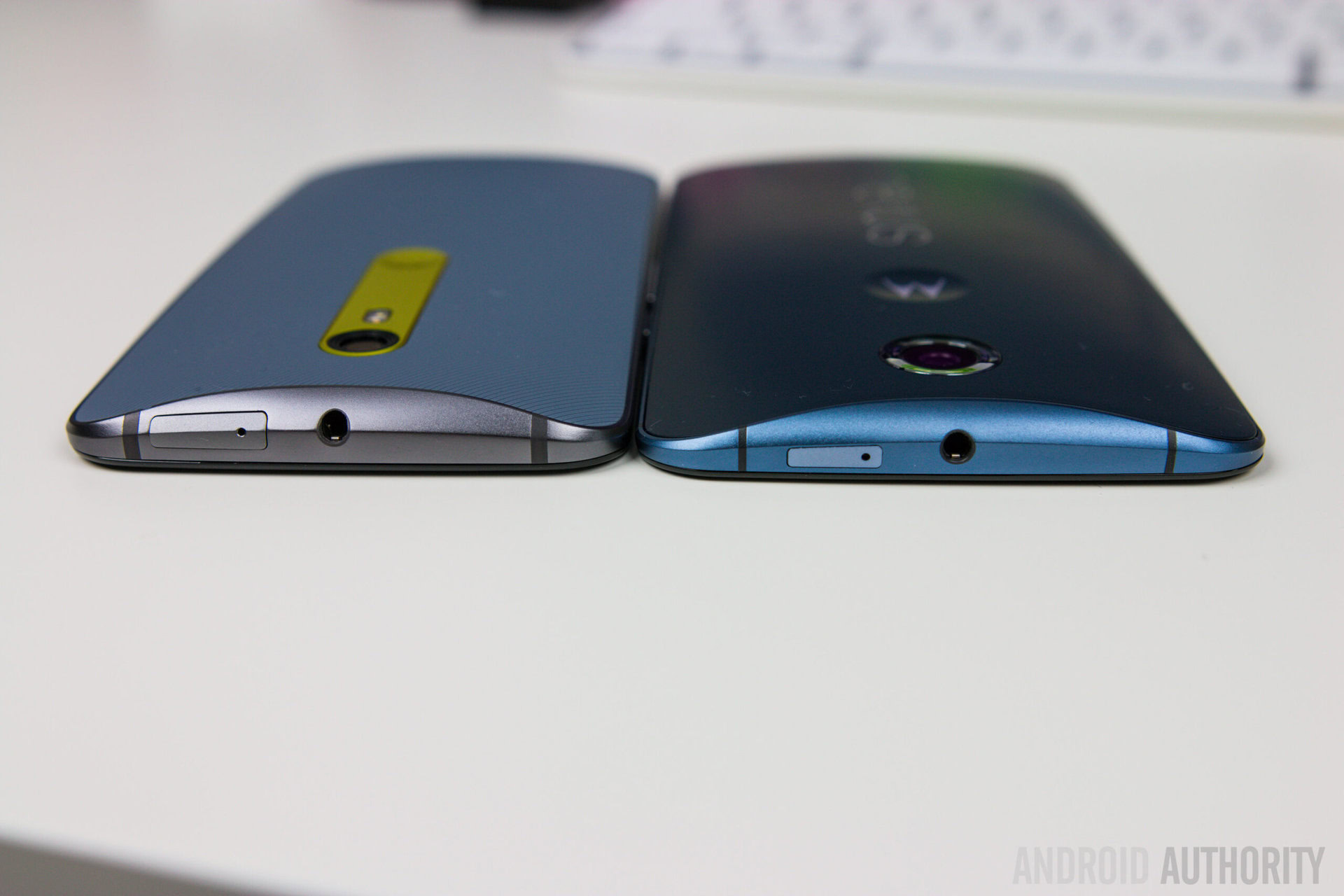
It’s not surprising that the Moto X Pure Edition and the Nexus 6 both share the same design language, given that both smartphones are manufactured by the same OEM. Both feature the same metal frame that wraps around the sides, the same curves along the corners and the back, as well as the identical placement as far as the button layout, ports, and front-facing speakers are concerned.
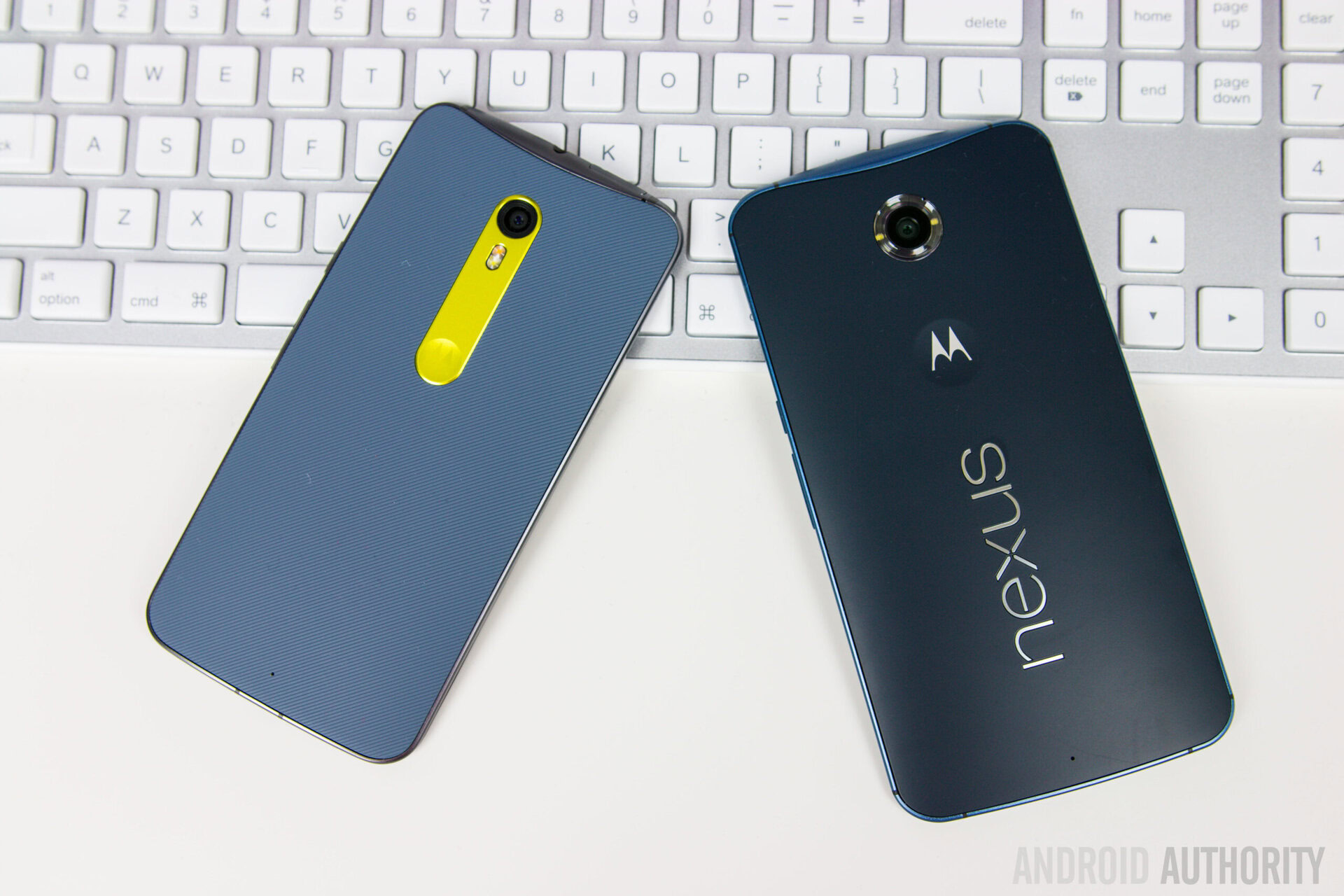
The signature Motorola dimple on the back is a differentiating aspect however, with the one on the Nexus 6 more reminiscent of the original Moto X from 2013, while the latest Motorola flagship takes on a new look, with the dimple housed in a metallic strip along with the camera.
The Moto X Pure Edition is also the smaller of the two smartphones, not only courtesy of its slightly smaller display, but also because of the fact that it features thinner bezels along the sides of the display. The Nexus 6 does manage to be slightly thinner, when comparing the two at their thickest points. All said and done, neither smartphone is small by any stretch of the imagination, but the Moto X Pure Edition is definitely the more manageable device, and doesn’t have the same unwieldy feel as the Nexus 6, as far as one-handed usability is concerned.
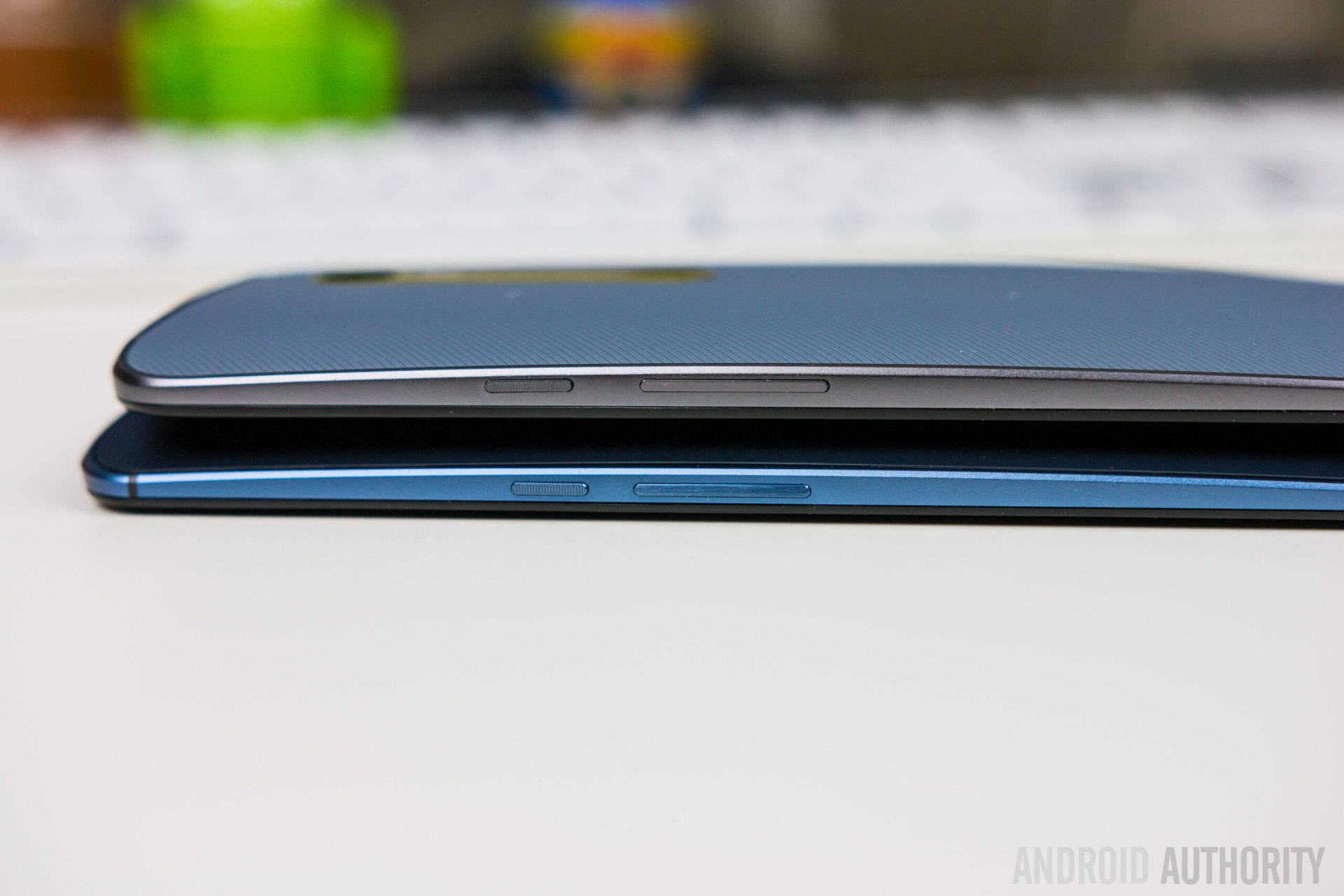
The biggest difference in design comes when taking a look at the variety and availability of color and other customization options. While the Nexus 6 can be found in a standard white or blue, users get to take advantage of Motorola’s Moto Maker with the Moto X Pure Edition, allowing for choices in colors, accent colors, and back cover materials, along with the ability to add engravings and messages, for an ever more personalized experience.
Display

On the display front, you get a 5.96-inch AMOLED display with the Nexus 6, while the Moto X Pure Edition features a slightly smaller 5.7-inch screen, with Motorola also making the switch to a TFT LCD panel this year. Both boast the same 2560 x 1440 resolution, resulting in pixel densities of 493 ppi and 520 ppi for the Nexus 6 and Moto X Pure Edition, respectively.
Both displays are absolutely gorgeous in their own right, especially with the Quad HD resolution, but if you are someone who is looking for those deep blacks and more vibrant colors that pop, that is something you will get only with the Nexus 6. On the other hand, the Moto X Pure Edition display allows for some great looking colors as well, but with an LCD panel, features like Moto Display unfortunately don’t look as sleek anymore, especially in darker environments, where the entire backlight lighting up is a lot more noticeable. Obviously, the Nexus 6 also has the leg up as far as screen real estate is concerned, but the new Motorola flagship does win out when it comes to overall brightness and outdoor visibility.
Performance
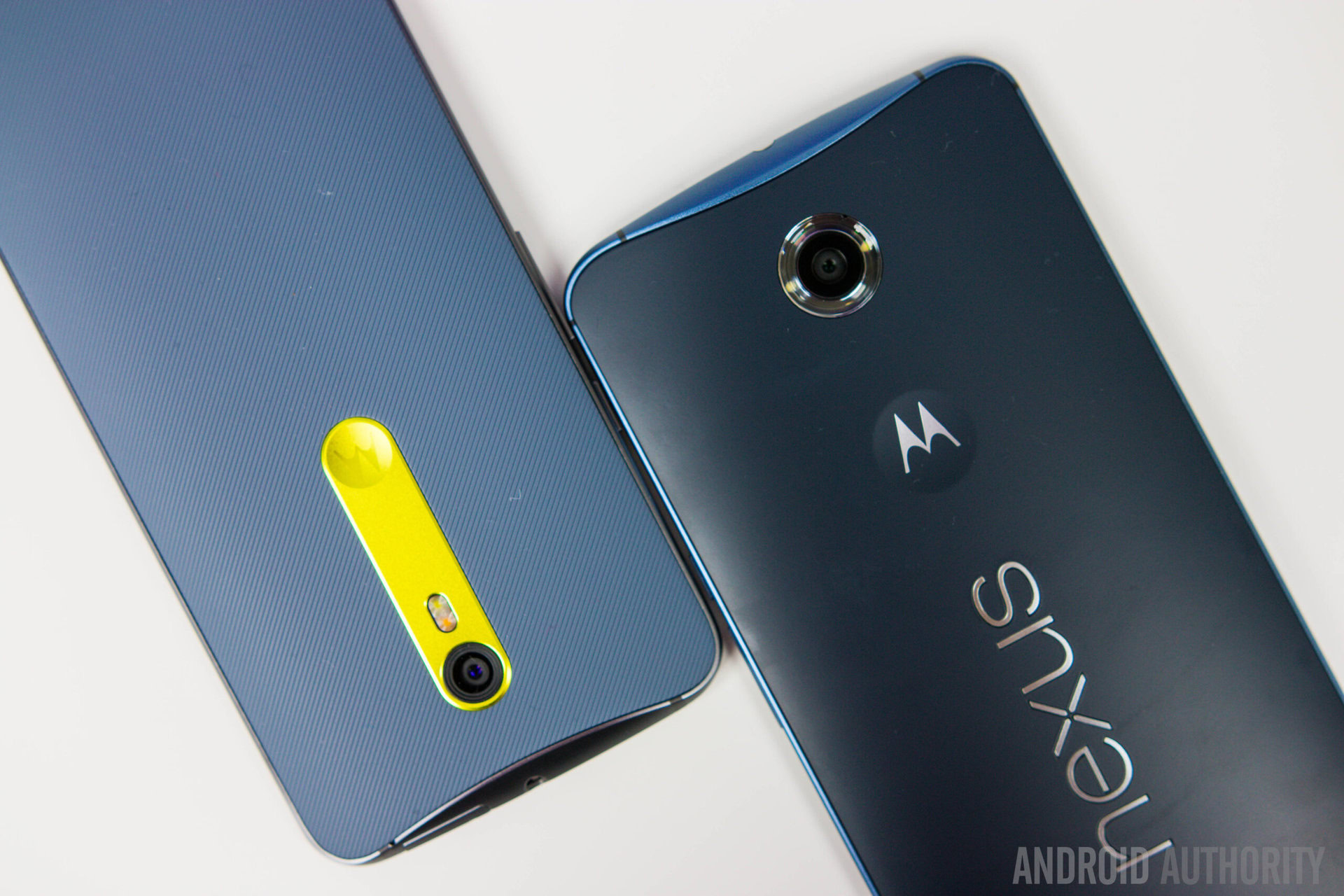
Under the hood, both smartphones are packing Qualcomm processing packages, with the quad-core Qualcomm Snapdragon 805 processor, clocked at 2.7 GHz, and backed by the Adreno 420 GPU and 3 GB of RAM in the case of the Nexus 6, and the hexa-core Qualcomm Snapdragon 808 processor, clocked at 1.8 GHz, and backed by the Adreno 418 GPU and also 3 GB of RAM, as far as the Moto X Pure Edition is concerned.
The Snapdragon 805 may be the older of the two, but it certainly isn’t showing its age yet, and is still a very capable processor, helped along by the stock iteration of Android it runs. The performance of the Moto X Pure Edition is fantastic as well, and it is extremely fast and fluid while running everyday tasks. Multi-tasking is a breeze with both smartphones, and neither have any issues with gaming either, made even more enjoyable with the large display real estate and high resolution that both feature. As far as day to day performance is concerned, you will be hard pressed to notice any real difference between these two devices.
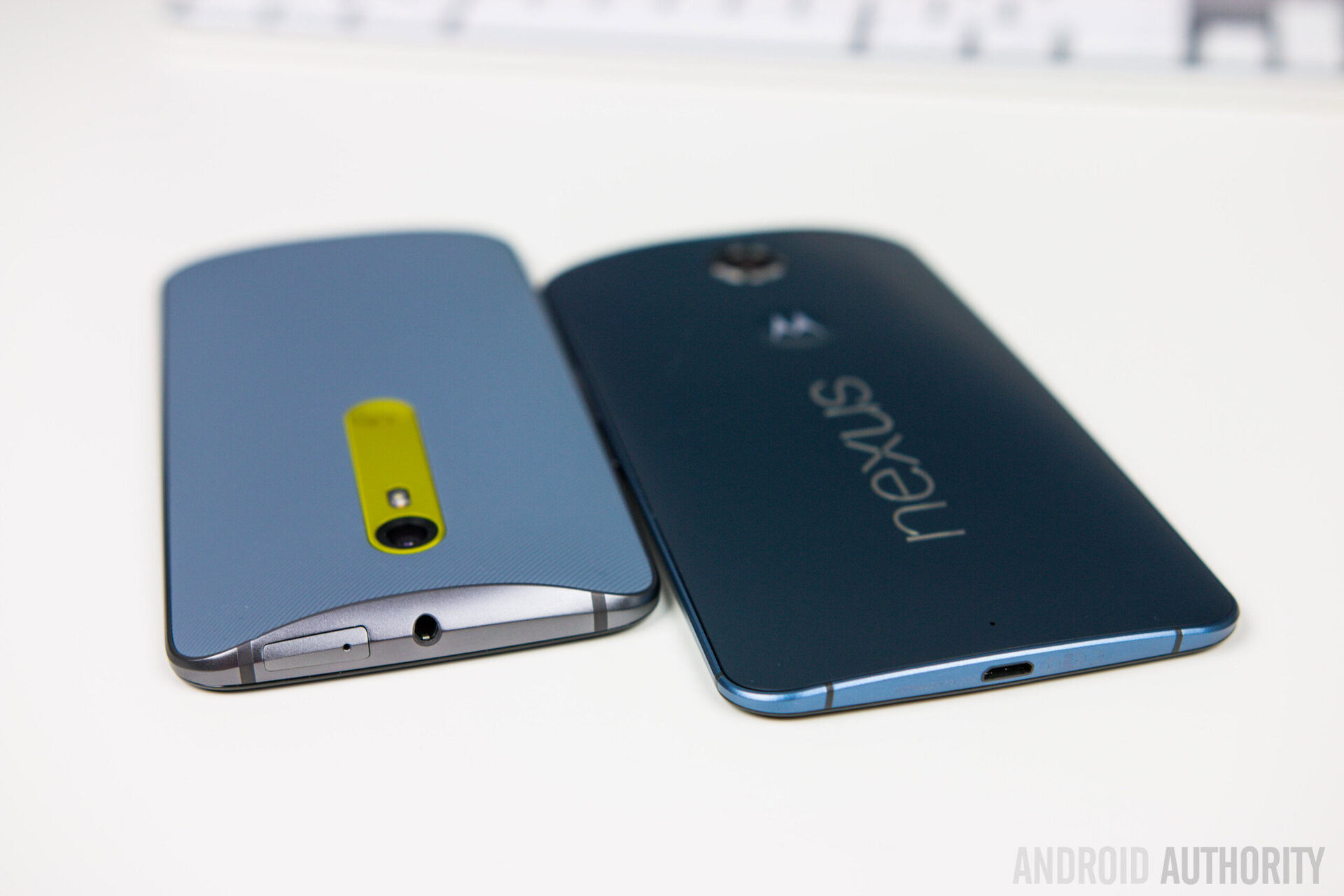
With regards to benchmark test scores, with Geekbench, you are looking at a single core score of 1072 and multi-core score of 3425 on the Nexus 6, which is lower than the 1257 and 3572 that the Moto X Pure Edition manages. The newer processing package does mean that the Moto X Pure Edition has the edge in this regard, but the difference isn’t significant, and as mentioned, you’re not going to see or feel a huge disparity when it comes to real world usage.
Hardware
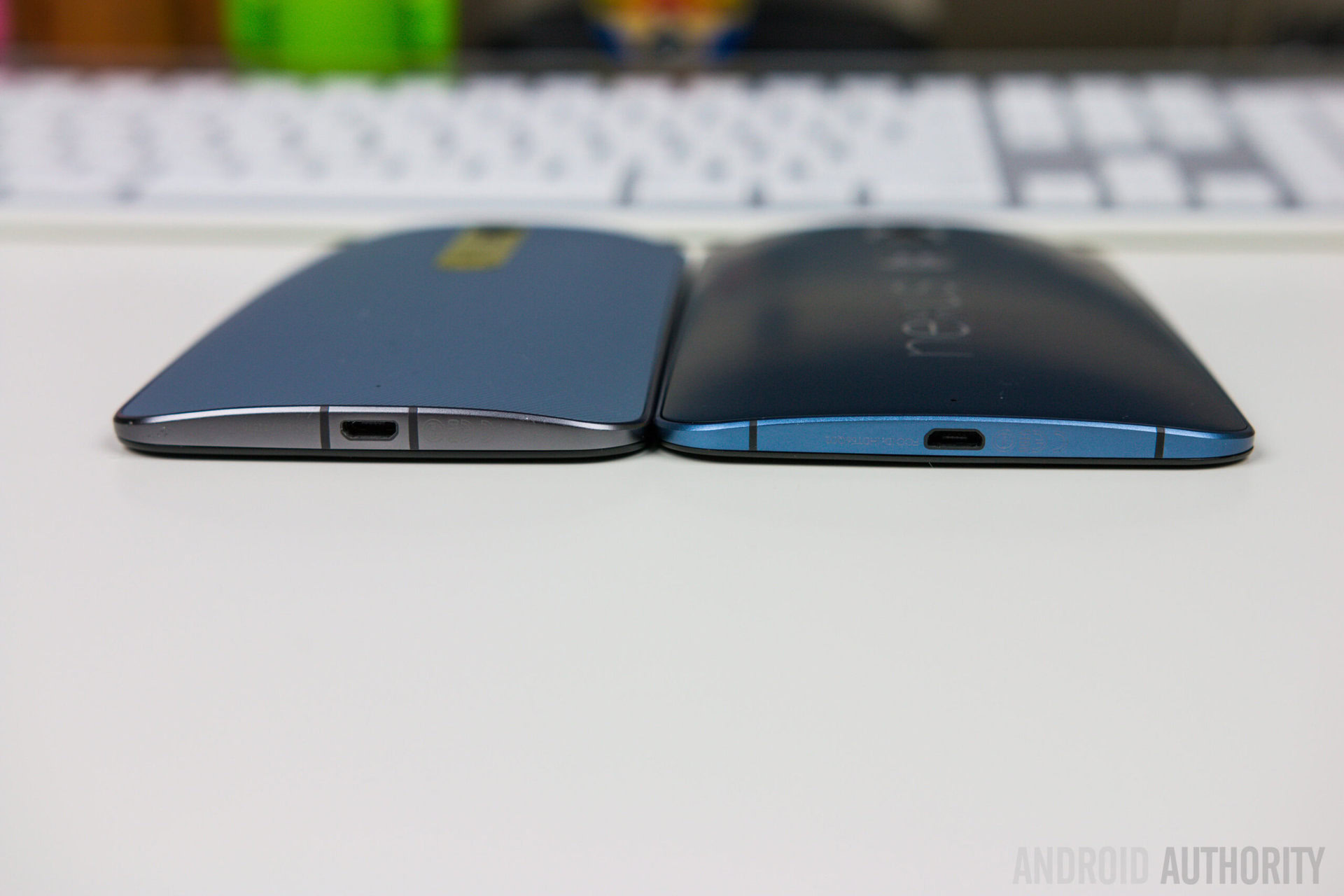
As far as on-board storage is concerned, the Nexus 6 brought with it a pleasant change, with the base storage option going up to 32 GB, with a 64 GB version also available for the power users out there. Like previous Nexus smartphones however, there is no expandable storage to be had. Lack of expandable storage was also true with past generations of the Moto X, but that is no longer the case with the Moto X Pure Edition. Expandable storage via microSD card is now available to further enhance storage by up to 128 GB, in addition to the on-board storage of either 16, 32, or 64GB that the Moto X Pure Edition features.

Where these two devices are complete winners is when it comes to speaker quality, with both the Nexus 6 and the Moto X Pure Edition featuring dual front-facing speakers, which allows for fantastic audio quality when listening to music, watching videos, or playing games. It has to be said though that the speakers of the Moto X Pure Edition sound just a touch louder, along with a little more low end punch, and you also have the option of tweaking the audio settings with the external speakers when using headphones, something which isn’t available with the Nexus 6.
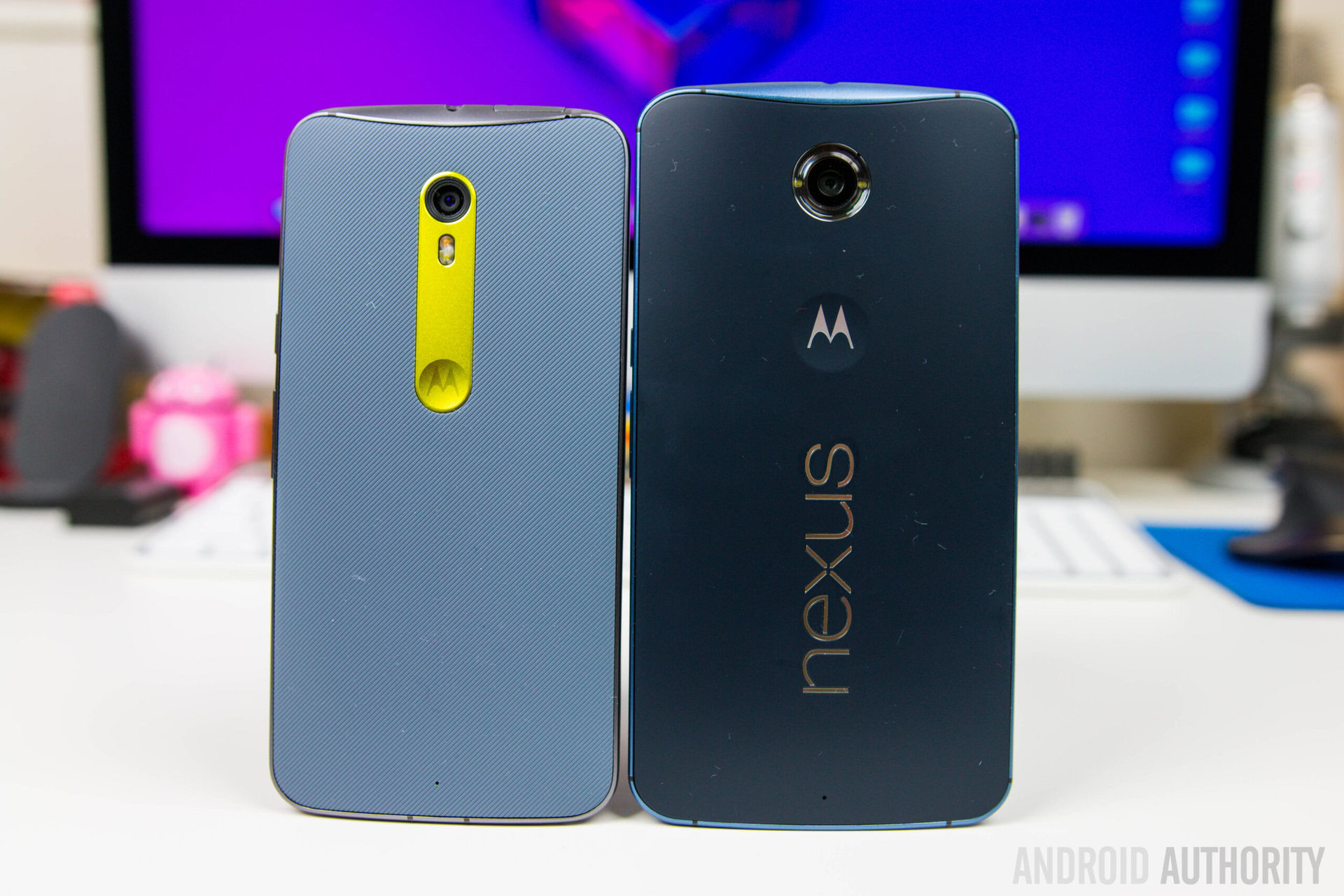
There isn’t a lot of difference when it comes to battery capacities either, with the Nexus 6 packing a slightly larger 3,220 mAh battery, compared to the 3,000 mAh unit of the Moto X Pure Edition. In my experience, both smartphones are perfectly capable of comfortably lasting through a full day of usage, if not more, which is all you can really expect from most current generation smartphones. Both also boast fast-charging capabilities, so it doesn’t take long to get either back up to a hundred percent. The Nexus 6 does also comes with wireless charging as well, something that Motorola continues to keep leaving out with their flagship line.
Camera
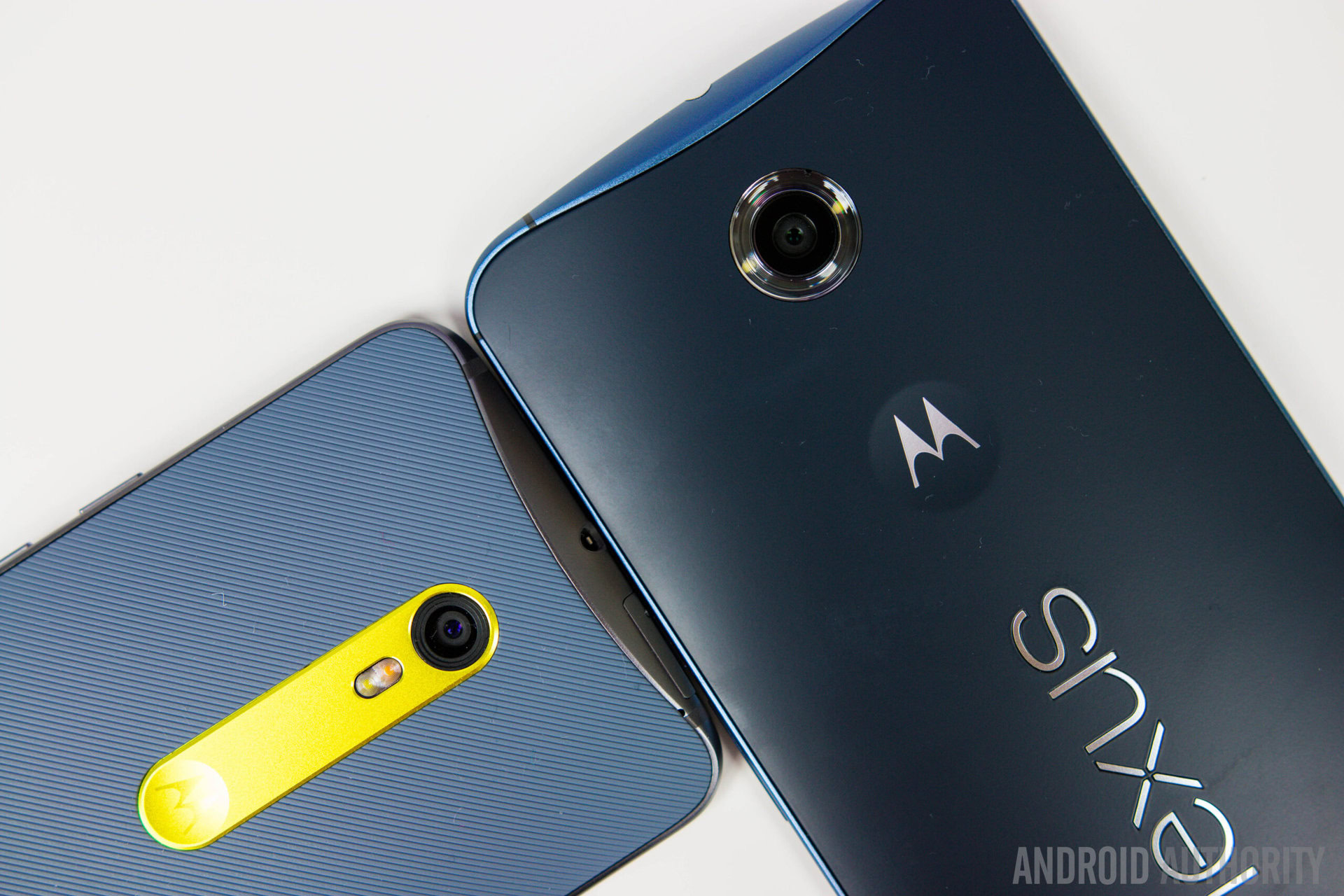
Motorola’s biggest weakness with their smartphones historically has always been the camera, which has coincidentally also been a concern that has plagued the Google flagship series. The Nexus 6 broke that mold, and so did the Moto X Pure Edition, with both featuring some drastic improvements to rear and front cameras, and in the case of the Moto X device, Motorola also went as far as to add a front-facing flash, to help avoid any dimly-lit selfies.
Nexus 6 camera samples
With the Moto X Pure Edition, you get a 21 MP primary camera with phase detection autofocus and a dual tone LED flash, while on the Nexus 6, there is a 13 MP rear shooter with optical image stabilization, and a LED ring flash. As far as the megapixels go, the Moto X Pure Edition obviously allows for more zooming and cropping, but as we all know, just the numbers doesn’t allow for the declaration of a clear winner.
Moto X Pure Edition camera samples
When it comes to overall image quality, and if you are just sharing these images on social media, you aren’t going to notice too much of a difference between the two, with both cameras being capable of taking some great looking images with tack sharp focus. Most people will probably find the images taken with the Moto X Pure Edition to be more pleasing however, with their higher contrast and slightly more saturated colors, while the images taken with the Nexus 6 camera are much flatter, but more natural looking. Both perform decently in poorly-lit environments as well, and while the Nexus 6 does tend to hunt for focus quite a bit, the resulting images are typically much cleaner, brighter, and with better white balance, when compared to the Moto X Pure Edition.
Both cameras are also capable of video recording in 4K, but again, the Nexus 6 suffers from the same hunting for focus problem when recording video, and for some reason, the footage isn’t quite as smooth or stable as what you get with the Moto X Pure Edition, even though the Nexus 6 is the one with optical image stabilization.
Software

The real advantage of owning a Nexus smartphone, and one of the key aspects of the program itself, is with regards to software, with the updates coming directly from Google. This means that not only do you get updates quickly, but the software experience itself is as pure as it gets. A lot of Nexus 6 owners will have already received, or will be getting very soon, the official update to Android 6.0 Marshmallow, which introduces a lot of nice improvements, like Google Now on Tap, and Doze, that will bring enhancements to the battery life. In the case of this comparison however, the Nexus 6 is still running Android 5.1.1 Lollipop.

Motorola has historically not been all that far behind with regards to quick software updates however, and in some cases, the company even managed to get updates out to their devices before other Nexus devices. If you are looking for a device that will feature speedy updates, the Moto X Pure Edition is probably one of the best options out there, though obviously the Nexus will still be the absolute best choice.
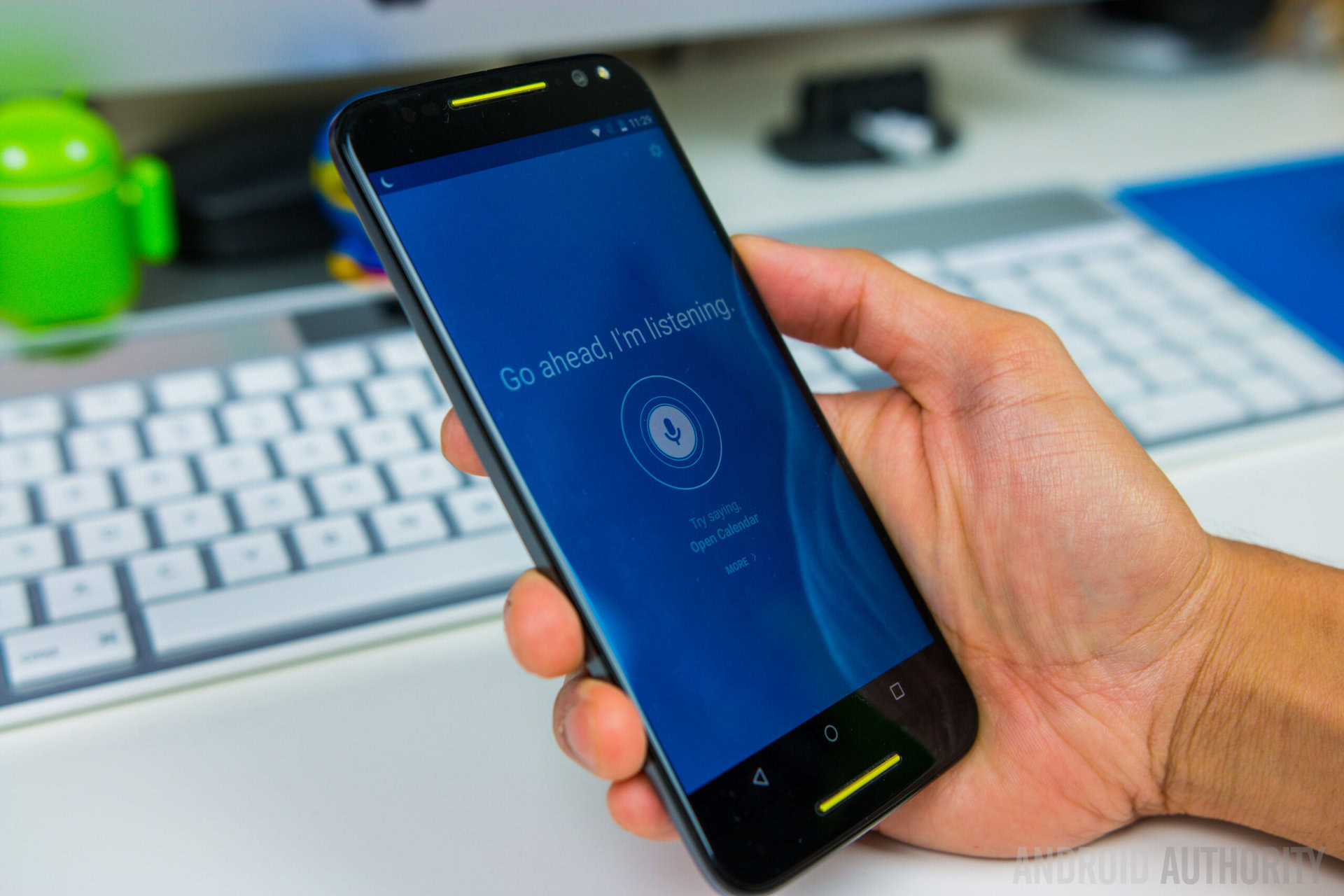
The Moto X Pure Edition also features a very clean software experience which is as close to stock Android as it gets, but with a few very useful additions baked in, that actually make the experience even better than what you would get with a Nexus device. To name a few, some of these enhancements are Moto Voice, that lets you call upon the device at any time, Moto Actions, that include gestures such as twisting your wrist to quickly open the camera application, or the ability to wake up the display and see any notifications by simply waving your hand over the phone. While some of these features may seem trivial or gimmicky at first, it does make switching to another device that don’t have these quite difficult, once you get used to them.
Specs comparison
| Moto X Style / Pure Edition | Nexus 6 | |
|---|---|---|
Display | Moto X Style / Pure Edition 5.7-inch TFT LCD display Quad HD resolution, 520 ppi | Nexus 6 5.96 AMOLED display Quad HD resolution, 493 ppi |
Processor | Moto X Style / Pure Edition 1.8 GHz hexa-core Qualcomm Snapdragon 808 Adreno 418 GPU | Nexus 6 2.7 GHz quad-core Qualcomm Snapdragon 805 Adreno 420 GPU |
RAM | Moto X Style / Pure Edition 3 GB | Nexus 6 3 GB |
Storage | Moto X Style / Pure Edition 16/32/64 GB expandable via microSD up to 128 GB | Nexus 6 32/64 GB no expansion |
Camera | Moto X Style / Pure Edition 21 MP rear camera with phase detection autofocus, dual tone LED flash 5 MP front-facing camera | Nexus 6 13 MP rear camera with OIS and dual ring flash 2 MP front-facing camera |
Connectivity | Moto X Style / Pure Edition Wi-Fi 802.11 a/b/g/n/ac Bluetooth 4.1 GPS + GLONASS NFC microUSB 2.0 | Nexus 6 a/b/g/n/ac Bluetooth 4.1 GPS + GLONASS NFC microUSB 2.0 |
Software | Moto X Style / Pure Edition Android 5.1.1 Lollipop | Nexus 6 Android 5.1.1 Lollipop |
Battery | Moto X Style / Pure Edition 3,000 mAh | Nexus 6 3,220 mAh |
Dimensions | Moto X Style / Pure Edition 153.9 x 76.2 x 11.1 mm 179 grams | Nexus 6 159.3 x 83 x 10.1 mm 184 grams |
Gallery
Pricing and final thoughts
The launch of the Nexus 6 was not without controversy, given the fact that at the time of its release, it was the most expensive Nexus smartphone to be made available, with a price point starting at $650, but the still impressive device can now be picked up for $350 for the 32 GB version (or even as low as $300 on sale), and $400 if you are looking for 64 GB of storage. The Moto X Pure Edition is also quite the bargain, especially for a phone that’s only about a month old at this point. Starting at $400, you can get yourself a 16 GB device with a standard color back, and the price point goes up from there, depending on your storage needs and material choices.

So there you have it for this in-depth look at the Moto X Pure Edition vs Nexus 6! If you want the purest Android experience possible, the guarantee of quick updates, and a large canvas on which to play on, then the Nexus 6 continues to be a great choice, especially given the price drop associated with the launch of its successor. On the other hand, the Moto X Pure Edition also promises a similar software experience, with some great enhancements, along with the availability of microSD expansion. The Moto X Pure Edition holds the edge by virtue of being the newer smartphone, but regardless of which way you decide to go, you are going to come out a winner.